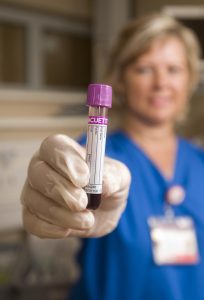 By Christine Kukka
By Christine Kukka
Around the world, millions of people with chronic hepatitis B face wrenching discrimination that limits their dreams, education, careers, income and personal relationships. Here are examples:
- A Vietnamese woman working in a hotel in Dubai is found to have hepatitis B and is fired, isolated, deported and given a life-time ban on re-entering the country.
- A young person from the Philippines, aspiring to increase her income to support her impoverished family, is hired to work in Saipan, but her work visa is suddenly cancelled by the employment agency when it discovers she has hepatitis B.
- A young man from the state of Washington, who worked hard in high school to get into the Naval Academy, is summarily dismissed within days of his arrival when it’s discovered he has hepatitis B. The U.S. military continues to bar people with hepatitis B from serving.
All of this discrimination is unethical, unnecessary and a violation of human rights. Hepatitis B is simply not transmitted through casual contact. The stigma that persists is based on ignorance and it impacts millions around the world daily. This is why we need to recognize Zero Discrimination Day on Wednesday, March 1.

This day, designated by the United Nations, highlights the negative impact of discrimination and promotes tolerance, compassion and peace. Many hepatitis activist organizations, including the Hepatitis B Foundation, is using this celebration to draw attention to global hepatitis B discrimination.
In the U.S., some progress has been made to eradicate the unequal treatment of people affected by chronic hepatitis B infection. In 2012, prompted in part by complaints filed by the foundation, CDC issued new regulations that clarified that hepatitis B should not, “disqualify infected persons from the practice or study of surgery, dentistry, medicine, or allied health fields.” These recommendations and a U.S. Department of Justice letter warned medical, nursing, dental schools that they could not exclude applicants and students with hepatitis B, concluding, “… for most chronically HBV-infected providers and students who conform to current standards for infection control, HBV infection status alone does not require any curtailing of their practices or supervised learning experiences.”
However, today people with hepatitis B can’t even get jobs as hotel maids in many countries in the Middle East and Asia. Fear and ignorance, and reluctance by government officials to outlaw these discriminatory practices, have allowed these rules that diminish basic human rights to continue. The young woman who was exiled from Dubai, wrote of her experience:
“When I was 21, I had my internship in Dubai and needed to undergo a blood test. I was not aware of the rules in that country so when I was tested positive, the hotel that I worked for isolated me. I was going through a very hard time because I was completely alone in a foreign country. My work visa was canceled, they brought me to a place that looked like a jail, they took my iris scan, and I was deported along with a lifetime ban, which means I can never come back to that country again. That was the most horrible memory in my life. I am still scared every time I think about it. Sometimes I cannot sleep at night, I keep blaming, cursing myself for having this kind of virus inside my body.”

No one is to blame for hepatitis B, including the millions who were infected at birth or from unsafe and contaminated syringes and medical devices. There is a safe and effective vaccine that prevents hepatitis B today. When people are protected, there is no reason to fear that healthcare workers or hotel maids will spread this infection.
It is morally reprehensible that given the tools and knowledge we have that this discrimination should continue today.
Every day is zero discrimination day, and ending discrimination starts with us working individually in any way we can in our communities to end this stigma.
Make the NOhep:NOexcuse pledge and take simple actions to help eliminate viral hepatitis. It only takes a minute to pledge your support!
The United Nations first celebrated Zero Discrimination Day on March 1, 2014, after UNAIDS, a UN program on human immunodeficiency virus (HIV) and Acquired Immune Deficiency Syndrome (AIDS), launched its Zero Discrimination Campaign on World AIDS Day.










